CH24 Watch of the Year 2023 – winners of the 14th edition!
Hereby we present you the winners of the 14th edition of our “CH24 Watch of the Year”. International […]
In-house manufactured timepieces are usually quite expensive to buy. There are however notable exceptions, like the Geneva based Frederique Constant.
Piaget, Vacheron Constantin and Harry Winston are the closest neighbours of the manufacture Frederique Constant (and Alpina – both sister brands reside under one roof) on the fairly small piece of land in Plan-les-Ouates, canton of Geneva. Looking a bit further you can also spot Patek Philippe and Rolex. And although all this neighbours represent much more experienced and renowned watch heritage, FC (short for Frederique Constant) – the brand with mere 25 years of history – found its way to the watch industry surprisingly well, offering nicely build, good quality Swiss-Made watches with a very reasonable price tag.
Officially inaugurated in 2005, the black rectangular building is the first one that you notice when approaching the little watch valley on Route de la Galaise and Chemin Du Champs des Files 32, current brands address.
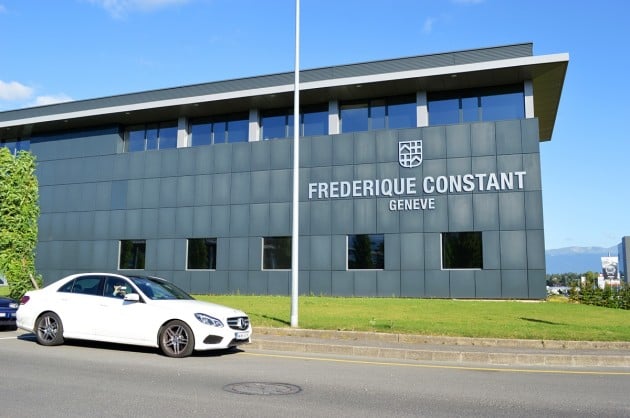

It is here, on the 3200m² of brand new space that all the activities of the company are integrated under one roof (with 120 employees), moved here from all the other small premises around Switzerland. To our surprise, it uses a very high amount of hand work and real people overseeing various steps of the production process. FC makes around 130.000 pieces a year, and about 12.000 of them (estimate for 2013) equipped with own, in-house made mechanical movements.
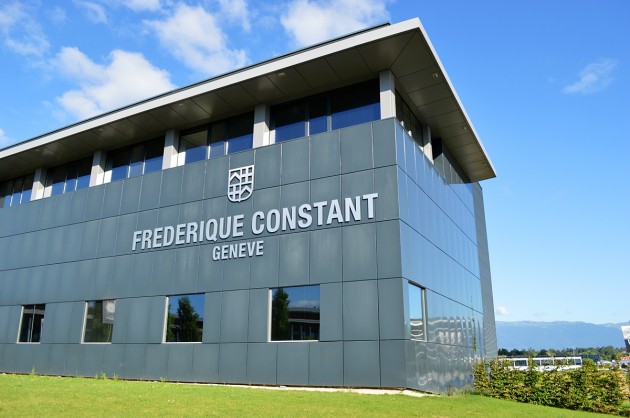
Three main sections of the manufacture that we were able to see up close represent three very significant steps of creating a mechanical watch: research and development (prototyping), components manufacturing and final assembly. The building was divided into 4 floors, representing each step of the process.
Design and all the marketing-PR-product creation-ownership activities are held on the top floor, along with offices of Aletta and Peter Stas (founders and owners of the brand). The bottom floor on the other hand is dedicated to prototyping and components creation on the high-end CNC machines.

It is here that all the bridges and plates (and some other parts) for the future movements are born. First quality control also happens already at that stage, along with test polishing, that is eventually outsourced to other supplier.

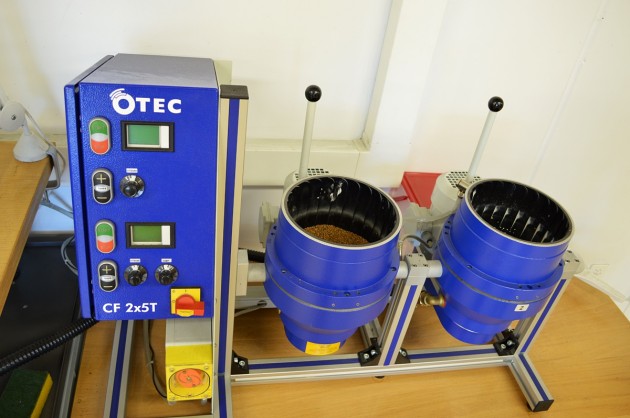
After finishing and decoration (Geneva stripes, golden engravings, blued screws) the parts are assembled into kits and delivered to the watchmaker bench. The team is led by the Dutchman Pim Koeslag – head of watchmakers for Frederique Constant and Alpina, co-founder of the haute horlogerie brand Ateliers deMonaco (that is also owned by the Stas family). Busy working on the next FC movement, young Mr Koeslag found some time to give us an idea on how the FC watchmaking works.
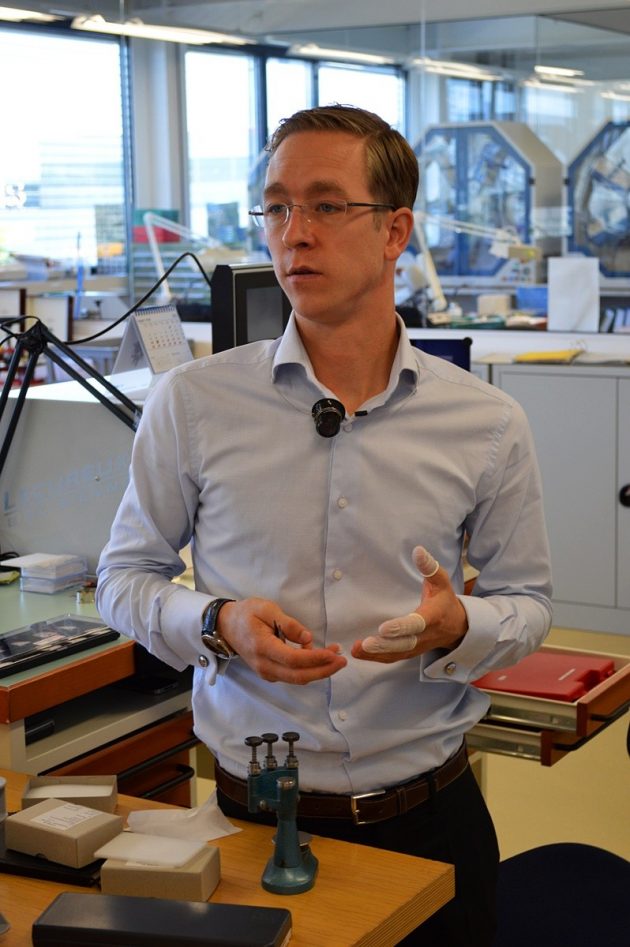
The main goal for Frederique Constant remains to maintain the level of growth of in-house made pieces. For now around 12.000 are made here, from the simple automatic FC-700 all the way to the Moonphase and Worldtime complications and a tourbillion. At the same time FC does not hide the fact, that components like the hair spring or balance wheel are bought outside, although there is a plan to make as much as possible in-house one day, while maintaining still attractive price level. Second-hand suppliers are inevitable (FC buys cases, dials, hands and straps as well) but luckily for a future Frederique Constant customer, their watches are still more than a simple assembly of external components.
The final assembly area (of manufactured pieces as well as the ETA and Selita based) is basically a set of watchmakers benches in quite a traditional style. Dials, hands and cases are also assembled in the manufacture, by hand. Another set of quality controls takes place next to the watchmakers room.
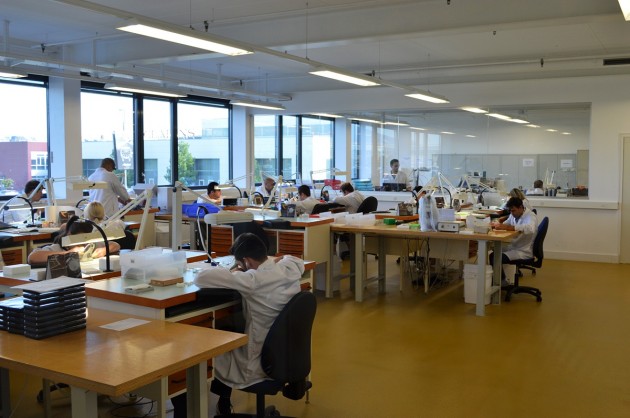
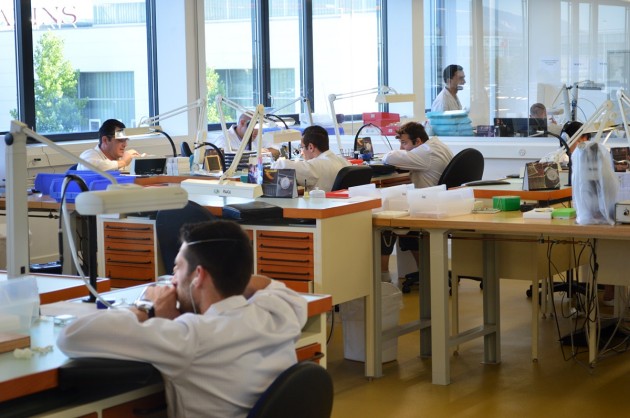
The QC is vivid throughout the whole process of making an FC watch, in order to fix any possible error in shortest possible time. As the saying goes – “better safe than sorry”.

Testing process of every single Frederique Constant watch involves waterproof check, timekeeping accuracy (on the set of large machines with mounted winding, for large number of pieces at once), power reserve and final, hands-on naked eye inspection. After sales service is also provided here, with qualified watchmakers able to fix and restore any FC and Alpina watch made.
There were two things that surprised us the most when visiting Frederique Constant. First one is a very impressive amount of work done by hand or with significant help of human control. It is even more impressive when you consider brand’s price level, that is far away from what you might think when looking for a “traditional watchmaking” values. The second aspect is the average age of the FC team… or rather the youth of it. There are young people everywhere at the manufacture, from the simple machine operators, through PR and marketing, all the way up to the head watchmaker – Mr Koeslag – who can’t be much more than 30 years old. FC takes care of the future by means of the own watchmaking school (at the premises) that provides young craftsmen, unfortunately sometimes also for the other neighboring brands.
During our conversation with Peter Stas we asked about this two things as well as of course about the future and strategy for Frederique Constant – read what Mr Stas told us HERE.



